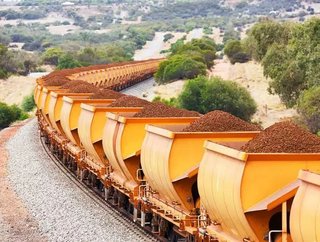Australia's energy and resources export earnings to hit record $214 billion

Australia is undergoing something of a “mini mining boom” a new report has revealed, following a huge increase in estimated export earnings from the LNG and resources sectors.
A new report from the Federal Government’s Office of the Chief Economist, the estimated export earnings for the financial year looks set to hit $214 billion.
This record high has been driven by growing LNG and iron ore export volumes. In 2018–19, prices are expected to weigh more heavily on export earnings, which are forecast to decline to $200 billion.
Australia’s resources and energy export volumes are expected to continue to grow at a robust pace over the next two years, driven by LNG and, to a lesser extent, iron ore.
Looking specifically at iron ore, Australia’s iron ore export earnings grew by 31 per cent to $63 billion in 2016–17, but are forecast to fall to $52 billion in 2018–19, as the impact of lower prices more than offsets growth in volumes.
“Steel production cuts in China have placed downward pressure on the price of Australia’s biggest export — iron ore — in the December quarter,” says Mark Cully, Chief Economist, Department of Industry, Innovation and Science.
“Continued moderation in Chinese steel production, coupled with increased supplies from both Australia and Brazil, are expected to weigh further on iron ore prices over the next two years. Coal prices — both thermal and metallurgical — are also forecast to weigh heavily on Australia’s export earnings in the next two years, due to rising global supply and moderating demand.”
Thermal coal
Looking across the board, In 2017–18, Australia’s thermal coal exports are forecast to rise marginally from 2016–17, and see further minor gains to 203 million tonnes in 2018–19.
Metallurgical Coal
Metallurgical coal exports are forecast to be 192 million tonnes, and then rise to 192.5 million tonnes in 2018–19.
Gold
The value of Australia’s gold exports is forecast to decrease from $18 billion in 2016–17 to $17 billion in 2017–18 and $16 billion in 2018–19.
Aluminium, alumina and bauxite
The value of Australia’s aluminium exports is forecast to increase by 19 per cent in 2017–18, to $3.8 billion, driven by high prices and stable export volumes.
Copper
Copper exports are forecast to rise from 921,000 tonnes in 2016–17 to 994,000 tonnes in 2018–19, supported by new mines and expansion projects over 2018 and 2019.
Nickel
Nickel export earnings are forecast to fall slightly to $2.1 billion in 2017–18, before rebounding to $2.3 billion in 2018–19.
Zinc
Rising prices are expected to boost Australia’s export earnings by 11 per cent to $3.0 billion in 2017–18.






